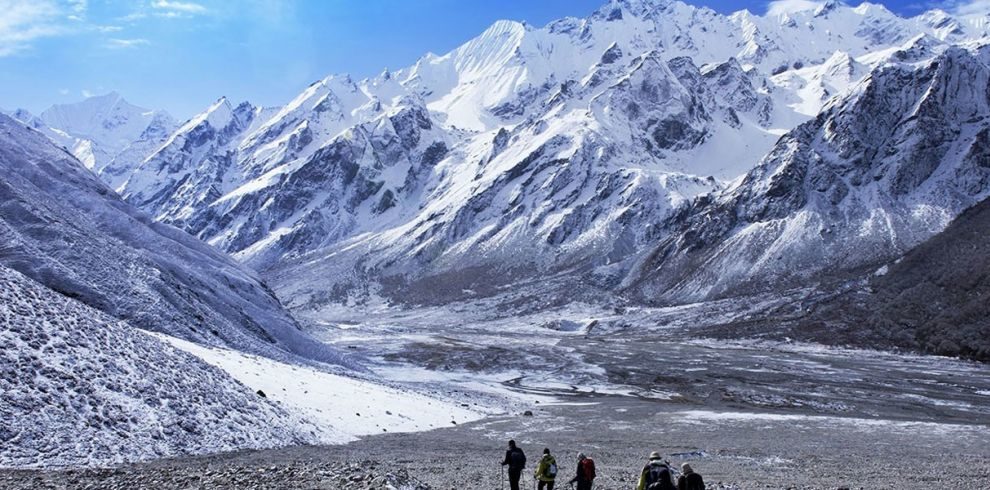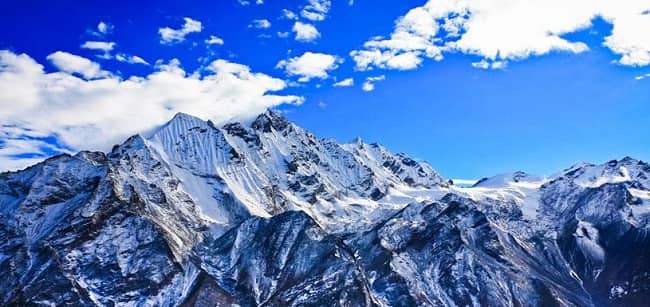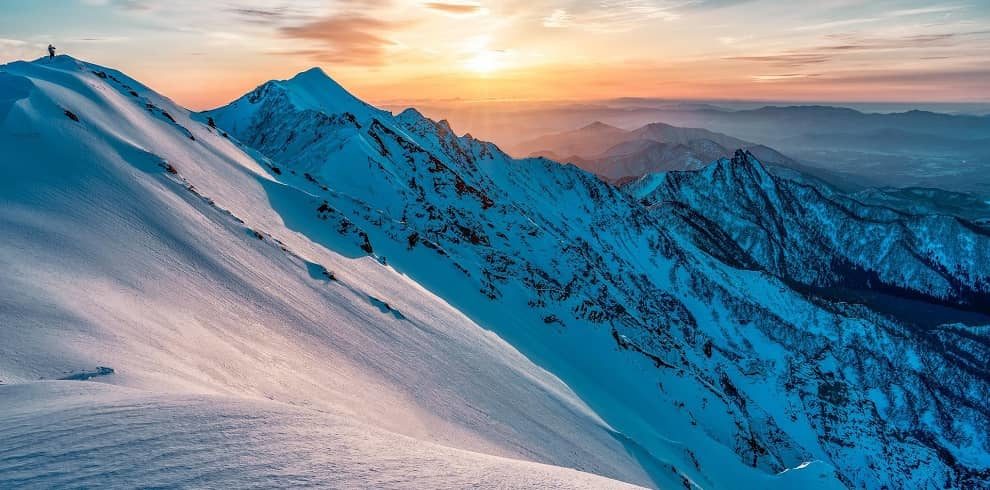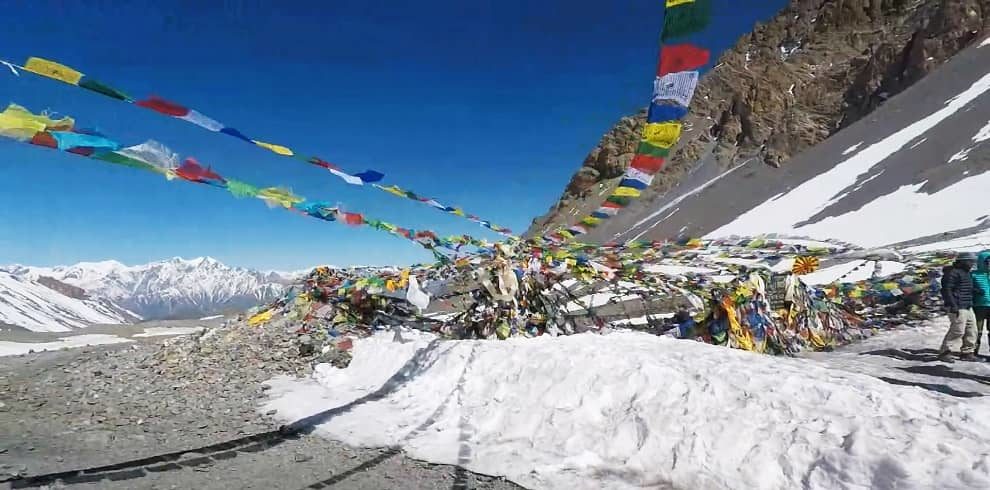Introduction To Langtang Valley Ganja La Pass Trek In Nepal
The Langtang Valley is home to vast rhododendron and bamboo woods, beautiful waterfalls, and snow-capped Himalayan peaks.
One of the most diverse treks near Kathmandu is this one. This walk also allows you to visit Tibetan and Tamang villages, climb tiny peaks, and view glaciers all while staying at a low altitude.
The Langtang Valley Ganja La Pass trip is difficult yet rewarding, offering stunning views of nature and Tibetan tribal cultures. The Langtang Valley is a compact, diversified, and exciting trekking destination.
Travel across the lower Himalayan foothills in just a few days to reach active glaciers in the high Himalayas. Within the magnificent Langtang Valley, there are numerous options for side treks, circuit treks, high mountain pass climbs, and peak climbing.
The tough Langtang Valley Ganja La Pass climb starts with a magnificent 7-hour drive from Kathmandu to Syabrubesi. The trail next takes us to the stunning Langtang valley, where we climb to Lama Hotel before continuing on to Mundu (3,403m) via the traditional Langtang hamlet.
We continue on the paths to Kyangjin Gompa, where we acclimate for a couple of hours. We can tour the valley and riverbeds surrounding Kyangjin Gompa, which are stunning.
From here, we hike to Tserko Ri (5000m), which offers a breathtaking panorama of the Langtang Himalaya ranges and peaks such as Langtang Lirung (7,246m), Kimshung (6,781m), and Yansa Tsenji (6,575m).
We then continue our journey to Ganja La Phedi, passing across the Ganja La Pass (5122m). As the elevation rises, the trip becomes more difficult. Langtang Lirung (8013m) and Shishapangma (8013m), both in Tibet, are visible from the pass’s summit.
We hike to Keldang and then to Yak Kharka before arriving at Tarke Gyang. Buddhism is practiced in these areas, and we will see several Buddhist stupas, monasteries, and monuments.
Further trekking to Sermathang and finally Malemchi Puul Bazaar reveals the beauty of nature and the sight of communities. We then return to Kathmandu after a 2-hour trip.
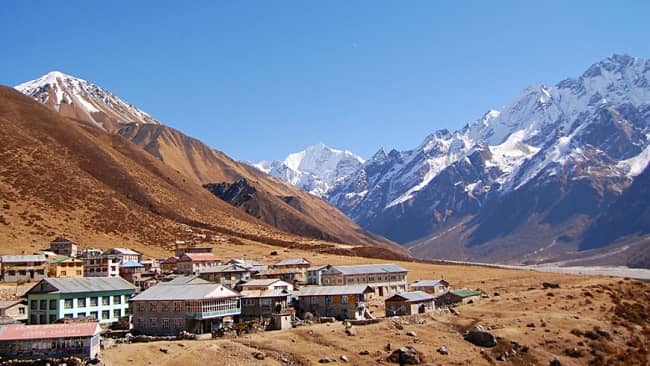
Because of its difficulties and the requirement of basic mountaineering experience, conquering the Langtang Valley Ganja-La Pass journey would be a great achievement. Taking on difficulties and succeeding at them would always make life more enjoyable.
Highlights Of Langtang Valley Ganja La Pass Trek In Nepal
- From Kathmandu to Syabrubesi, have a scenic road trip.
- Visit Kyangiin Monastery and Langtang Village
- Kyangjin Ri offers a panoramic view of the mountain.
- The view from Ganja La Pass is breathtaking (5122m)
- Buddhist monasteries, stupas, and structures that are centuries old and historically significant
- Flora and Fauna of Various Types
- Red pandas, snow leopards, musk deer, bears, and langurs are examples of wildlife.
Benefits Of Langtang Valley Ganja La Pass Trek In Nepal
- Private transportation to and from our Kathmandu hotel to Tribhuvan International Airport, Kathmandu’s international airport (TIA).
- To check blood oxygen saturation levels at a high altitude, bring a pulse oximeter. It’s a crucial signal for spotting early indicators of imminent altitude sickness and other health hazards.
- Medical Supply Kit
- If you don’t have your own, make arrangements for sleeping bags and down jackets.
Equipment list for Expedition
We recommend that you bring only the essential clothing and equipment for the walk. Your primary luggage will be carried by porters, but your luggage weight limit is 9kg. A porter will be shared by two hikers, and they will not carry more than 18kg of luggage. We do, however, expect you to bring a backpack with all of your important documents and valuables. You may buy or rent clothing and equipment in Kathmandu, but make sure you get the proper size.
Although we recognize that you have your own tastes, we have compiled a list to assist you in packing.
Head
- Scarf or hat for the sun
- Winter hat, insulating hat, or a hat with a wide brim
- Extra batteries for the headlight
Face
- Sunscreen
- Sunglasses that block UV rays
- Wipes for the face and body
Hands
Lightweight gloves
Heavyweight winter gloves
Body
- Shirts for hiking
- Shirt with a long sleeve made of synthetic fiber.
- Rain jacket with hood
- Jacket made of fleece
- Cotton pants that are light and airy.
- T-shirt (bring lightweight wool)
- Underwear made of polypropylene
- Jacket with down feathers (available for rent in Kathmandu)
- Sweater
- Jacket and pants that are waterproof
Footwear
- Boots for Hiking
- Socks made of thick wool (Take an extra pair of thick light socks)
Essential gear
- A daypack or a backpack (Size depends on whether you take a porter or not)
- Bottle with a heating element
- Purification of water
- Pole for hiking
- Bag for sleeping (-15 degree bag is best for high altitude trekking)
Toiletries
- a drying towel of medium size
- Toothbrush
- Toothpaste
- Deodorant/floss/toilet paper
- Biodegradable soap in a bar
- a pair of nail clippers
- Mirror, little
Personal accessories
Money
Watch
Cell phone
Camera
Extra items
- Kit for first aid
- Extra passport pictures and passport photocopies
- Pencil and notebook
- Binoculars

Destination: Langtang Valley Ganja La Pass Trek (Source: Trekking Mart)
Trek Information
On-arrival Airport Pickup
For valued clients who have booked a package with us, we provide complimentary airport arrival and departure transfers. At the airport, our agent will be holding a leaflet with your name on it. They will greet you and give you a marigold garland or khada as a welcome gesture before driving you to your accommodation in a private vehicle.
We ask that all of our valued clients arrive in Kathmandu by 3 p.m. at least one day prior to the trip departure date. We need time to conduct a trip briefing, during which we offer you with information on your journey and inspect your equipment (luggage) to ensure that you are well prepared for the walk.
Start of the Trek
You will arrive at Kathmandu’s Tribhuvan International Airport and will need to stay in a hotel for at least one day. You will travel to Syabrubesi by bus or local jeep on the day of your trek departure. Kathmandu is 8/9 hours distant from Syabrubesi (the gateway to Langtang).
The package includes local transportation (from KTM to Syabrubesi and back). A private jeep can be rented for an additional fee.
Accommodation details during the Trip
The Langtang Valley Ganja La Pass Walk is an 11-day trek with ten nights spent in mountain native lodges that provide minimal amenities and make you feel at ease thanks to the wonderful hospitality of the locals. You will need two nights in Kathmandu to rest before and after the hike, which is not included in the program.
There is a wide choice of hotels to suit all budgets. The room is virtually twin-sharing-style, with a bed, mattresses, blankets, and pillows. Showers will be available for an additional fee. In the Himalayan region, we have good public relations with local service providers.
What about the meals?
This trek’s lunch package is really convenient. The bundle includes three meal items: eleven breakfasts, eleven lunches, and ten dinners. The meals will be chosen from the lodge’s menu and will be fresh, hygienic, flavorful, and nutritional. Traditional local, Asian, and western cuisines are represented on the menu.
Best Season
January – February
This is the coldest period of the year, especially in early January and early February. The climate in the Langtang region is cold, and the mountains are covered in snow. The daytime will be warm and pleasant, with bright skies, while the evenings will be chilly. If you don’t mind walking in the snow, the excursion will be enjoyable, with stunning vistas of snow-capped hills and mountains, especially in February.
March – April
The greatest time to visit the Valley is around this time of year. The weather is ideal, and you may take in spectacular views of the Langtang Lirung, Langtang II, and other Himalayan peaks. Temperatures begin to rise in mid-March, and with bright skies, the snow mountains are at their most beautiful. The bamboo and birch forests will be lush and dense, with a delicious green color.
May – June
It’s also the best time to walk to Langtang Valley, as it’s just before the rains arrive. The monsoon season begins in late June and lasts until mid-August. The walk is much more pleasurable in May and June since the weather is a mix of spring and summer.
July – August
This is when the rainiest part of the year occurs, and you’ll notice a lot of clouds. The paths will get a little slick due to rain, but trekking can still be enjoyable. After showers, you’ll have plenty of opportunities to witness rainbows.
September – October
The months of September and October are ideal for a trip. Due to the great weather, this is the busiest trekking season. As the rain fades, the weather becomes ideal for trekking. During the day, the temperature rises to 20 degrees and drops to 8 degrees at night. Tourists also travel to Langtang during the months of September and October, which coincide with the Dashain and Tihar festivals.
November – December
As winter approaches, snow begins to fall in the Langtang region, making trekking difficult. The nights are getting colder. November is also a favorite trekking month because of the beautiful weather. The daytime temperatures are fairly steady and consistent, which allows for a spectacular view of the bright blue sky and the mountain. The temperature drops in December, and snow begins to fall. Temperatures at high altitudes can dip below -5 degrees Celsius at night.
The weather in the highlands is changeable and unpredictable.
Acclimatization
You will spend two nights over 3500m throughout the eight-day journey, therefore you may be susceptible to altitude sickness, commonly known as acute mountain sickness. As a result, we shall acclimate at Kyanjin Gompa. You will spend the acclimatization day visiting various attractions such as the monastery, the cheese factory, and climbing to Tserko Ri viewpoint.
Although altitude sickness is quite common, severe altitude sickness necessitates prompt medical attention. Our trip leaders and guides have received comprehensive first-aid training and have dealt with altitude sickness before. You can rest assured that your health is in good hands. Please notify your group leader as soon as you become aware of the signs and symptoms of altitude sickness.
Precautions will also be recommended by your trek leader or guide. The ideal strategy is to take it slow and drink plenty of water – at least 4 liters every day. The only way to recover from severe altitude sickness is to descend as soon as possible.
Please keep in mind that your group leader has the ability to determine whether or not to continue your ascension based on the team’s current condition. It is critical to recognize that some individuals are more vulnerable than others.
Trip Grade: Fitness level, Medical, and Health
This is a simple and rewarding trek. Depending on the nature of the walk, you will be hiking for 3-6 hours per day. We’ll take many breaks to soak in the scenery. In the rocky roads and dense woodlands, the trek routes include hard ascents, descents, and forward trails.
The more fit you are, the more enjoyable your journey will be. This may be beneficial if you have hiking experience or enjoy it, but it is not essential. Please let us know if you have any medical conditions, such as heart or lung disease, before booking the trek.
Trekking in Group | Solo Private Trek in Langtang National Park
We organize both group and private treks. Group discounts are available dependent on the size of your group. The larger your group, the greater the savings. Please see our price list for further information. Simply click the – we offer group discounts – link on the right.
Having said that, we can accommodate groups of any size and even add an assistant guide for groups of 12 or more.
A typical day on the Trek
Every day will be different, with activities such as enjoying the journey and scenery, shooting photos, and touring the surrounding villages. As you trek, qualified expert Sherpas will provide you with information and historical details about the locations.
The majority of your luggage will be carried by our porters, but you may need to bring a small normal bag for your valuables.
After breakfast, we head off on the day’s walk between 7 and 8 a.m., depending on the length and character of the hike. After three to four hours of hiking, we’ll stop for lunch and an hour of recuperation before continuing our journey.
The afternoon stroll is usually shorter, lasting between two and three hours. You can enjoy the refreshments after you get to your overnight lodge/tea house/tent, and then you are free to explore the area.
Dinner is served between 6 and 7 p.m. After supper, you have some free time to engage in casual chat. The excursion leader/guide will give you an overview of the next day’s activities. After the briefing, you can play monopoly, play cards, or watch mountaineering films on board. Before going to bed, the majority of our guests study the Nepali language or read novels.
How to Communicate During the Trek?
For a nominal fee, you can use the internet at the lodges, but after you reach high elevations, you’ll have to communicate via phone.
Our office will connect with all of our valued clients by Signal, WhatsApp, phone, Messenger, and other means at least once a day to ensure that they are fine, safe, and comfortable.
You might get some signals along the route, depending on the network you’re using, but they’re not particularly strong at high altitudes. In Kathmandu, though, you may easily obtain a local sim card.
In most cases, you will be able to connect to the internet at all of the lodges/hotels where you will be staying.
Wi-Fi is usually available during the walk-in lodges/lodges for an additional fee.
Extra personal expenses on trekking
In Kathmandu, the clients are responsible for their own meals and lodging. You may book them conveniently online, or we can do it for you if you want.
Similarly, you must pay for visa processing, travel insurance, beverages, trip snacks, hot and cold drinks, souvenirs, and tips to trekking crew members, among other things. Bringing cash (Dollars) and changing it to Rupees is recommended. In the Nepali market, only Rupees are accepted.
Electricity, battery recharge, water on trekking
In all lodges, electricity for camera and phone recharge is available at an additional expense. During the trip, you can either buy pre-packaged mineral water or bring boiled water with you. You will also receive a water-purifying pill.
We advise against drinking water from rivers or taps because the water may be contaminated.
Trek travel insurance
This Trek requires travel insurance. Before beginning the hike, all trekkers must produce a copy of their comprehensive travel insurance policy certificate to us. Medical and emergency repatriation must be covered, as well as helicopter rescue and evacuation costs at high altitudes (up to 6000m).
Based on the experiences of our former clients, we may recommend insurance firms to you. We do not, however, sell insurance coverage. Within a week of booking the trek, we ask that all trek participants provide us with their comprehensive insurance information. In an emergency, we’ll prepare a speedy, successful rescue using your insurance policy and other documentation you supplied us.
Before you acquire travel insurance, call your provider and double-check that it covers helicopter rescue and evacuation up to 6000 meters. Do not rely solely on the material of the insurance company’s website.
How to get a visa for Nepal?
Except for Indian nationals, all foreigners must have a valid visa to enter Nepal. At Tribhuvan International Airport and Nepal’s borders with India and Tibet, you can obtain an on-arrival visa. Visit www.immigration.gov.np. for additional details.
You’ll need a passport that’s valid for at least six months, a passport-size photo, and visa fees to apply for a visa. A 30-day visa costs $50 at the moment (to be paid in cash).
A free visa will be given to children under the age of ten. It is strongly recommended that you examine the current regulations. Visa regulations are subject to change at any time. Citizens of China and members of the South Asian Association for Regional Cooperation (SAARC) (Bangladesh, Bhutan, India, Maldives, Pakistan, and Sri Lanka) are exempt from visa fees.
Certain countries’ citizens may be denied a visa upon arrival. On-arrival visas are not available for citizens of Nigeria, Ghana, Zimbabwe, Swaziland, Cameroon, Somalia, Liberia, Ethiopia, Iraq, Palestine, and Afghanistan. If you are a citizen of one of these countries, please contact the Nepalese Embassy in your country.
Before we embark on our journey, we’ll double-check everything (luggage, equipment, etc.) during our briefing.
Currency Exchange in Nepal | USD to NPR
Nepali Rupees (NPR/Rs) are the local currency.
(1 USD = ~ Rs.124 NPR).
You can exchange major foreign currencies through local banks and legitimate money exchanges in Kathmandu and all over Thamel. Legitimate money exchanges display their ongoing exchange rates visibly to the public.
Please note – only 100 INR (Indian Rupees) and 2000 INR notes are legal in Nepal.
Despite having the security advantage of traveler’s cheques, we prefer cash exchange. It helps avoid lengthy processes and high bank commissions.
You can withdraw cash (in Rupees)from ATMs all over Kathmandu and Thamel itself. Many of these ATMs are open around the clock. The maximum withdrawal amount is 35,000 Rupees for a 500 Rupees processing fee for foreign cards.
If you use the money exchange facilities at banks and financial institutions, they impose a service charge fee of about 4% or more.
During the trek, there are no banks and money exchange services so you should exchange your money in Kathmandu, depending on how much personal expense you require. Only Nepali Rupee is accepted in trekking regions.
Most established banks in Asia will only accept foreign currency notes that are not old, torn, or faded. Please ensure that you have new, clean notes.
How much luggage can I take during the Trek?
Your luggage must not exceed 9 kilograms per trekker. One porter will be allocated to each of the two trekkers, and the total weight of their luggage should not exceed 18 kg. Our porters are never overworked.
You may, however, need to bring your own knapsack or backpack (with valuables or anything important). Carry only what you need. Excess baggage can be safely stored at your hotel or at our store for no charge.
Before we begin the journey, we will double-check everything (luggage, equipment, etc.) during our briefing.
Trek Safely
All of our clients’ safety, security, and happiness are guaranteed by us. We place the highest priority on your safety. For each trip, we will bring all of the essential gear, equipment, and first-aid kits. Our guides and leaders have completed thorough first-aid training.
If a trekker becomes ill as a result of the altitude, we will analyze the situation and keep everyone safe. In the event of an emergency, the rescue chopper will be on standby to transport you back to the lower elevation. Every team member will be together for safety during the walk, and there will be no danger of being lost in hazardous terrains.
Responsible travel
Our philosophy is to photograph the voyage while leaving only footsteps. We believe in sustainable tourism and exclusively offer eco-friendly excursions.
We collaborate with the Kathmandu Environmental Education Project (KEEP) to plan eco-friendly itineraries that satisfy the needs of both tourists and local populations in the trekking areas.
Our Crew
Our knowledgeable guide/Sherpa will accompany us on the trek to ensure your safety and comfort. Your stuff will be carried by porters.
Our members are locals from high Himalayan remote places, and they have exceptional physical endurance at high altitudes.
We value all of our employees, so we pay them well and take care of their insurance, clothing, food, and lodging throughout the trip. When our guides and porters become unwell or injured, they receive medical attention.
Only happy people can make others happy, thus we always make sure that our team members are happy. Members of our trek/expedition team have the following qualifications:
- Authorized Trekking Guide Training Certificate
- Intensive Wilderness First Aid Training
- Fluency in English and another major language
- Conservation and Biodiversity Training
- Experience with rock climbing
Tipping during trek
Tipping is optional and should be dependent on the quality of service received. A tip is an accepted and respected technique in Nepali society to express gratitude (Dhanyabad) for good service.
On the last day of the walk, the majority of our guests offer advice. The amount you tip is totally up to you, and it may be more or less based on your impression of service quality, the length of your trip, your budget, and your appreciation for their efforts.
100% Guaranteed Booking
We are a government-approved and bonded trek and tour company in Nepal. We are also members of the Nepal Mountaineering Association (NMA) and the Trekking Agency Association of Nepal (TAAN) (NMA). As a result, you may book your trek/expedition with complete trust.
As a deposit, we require 10% of the total trip cost. Within a week of booking, please send your documentation, including a copy of your passport, passport-size pictures, travel insurance policy, and arrival and departure flight information.
You can make a 10% deposit via bank transfer, western union, or online payment on our website, and the full balance when you arrive in Nepal. Cash, bank transfer, and credit cards are all acceptable methods of payment. In addition, you will receive payment choices in your email.
Last-minute Trek booking in Nepal
Even though it is always a good idea to plan ahead for your excursions. However, for those who are unable to do so, we provide a special last-minute booking option. To take advantage of this benefit, you must pay the entire trip cost 24 hours before the trek’s departure.
Even while we do our best to plan treks at any time, there is a small potential of a trek delay due to events beyond our control, such as the inability to obtain air tickets or unfavorable weather.
Can I extend my trip?
If you wish to stay in Nepal for a few days after the trip, we can arrange enjoyable activities for you, such as exploring areas in and around Kathmandu, Chitwan jungle safari, paragliding, rafting, canoeing, and so on.
Feedback
We offer a farewell meal at the end of the trek, and we will also award you with a trek completion certificate after dinner (hard copy). It’s also a great opportunity to tell us about your experience and provide us feedback.
Overview Of Langtang Valley Ganja La Pass Trek
- Langtang Ganja La Pass Trekking offers snow-covered high passes, spectacular mountain views, ancient religious villages, beautiful Langtang and Helambu valleys, and abundant wildlife.
- The Langtang Ganja La Pass Trek takes you from the crowded trails of Langtang to the quiet trails of Helambu across the icy Ganja La Pass (5130m), allowing you to be in the midst of pristine nature free of human disturbance.
- This amazing Ganja La Pass Trek offers us panoramic views of the Langtang Valley‘s west side, its priceless holy lakes, and the Gosaikund Gorge in the south. The Ganja La passes trek route map is dotted with the natural beauty of the environment and magical prayer flags, making the journey even more meaningful and peaceful.
